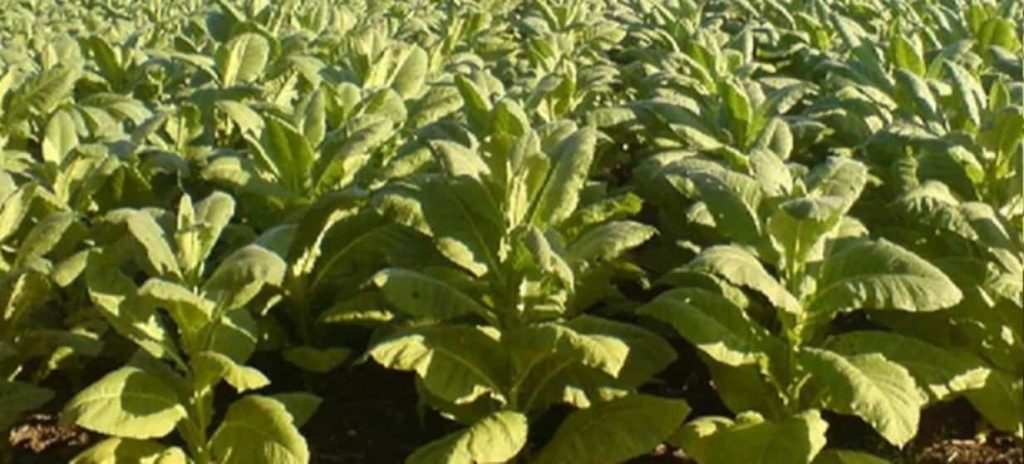Growing tobacco in Uganda

The cultivation of tobacco in Uganda is a complex and intriguing topic. It’s a practice steeped in tradition, yet constantly evolving in response to economic, environmental, and societal changes. As we delve into this subject, we’ll explore the intricacies of tobacco farming, the economic impact it has on rural livelihoods, and the challenges and opportunities that lie ahead. Join us on this journey through the tobacco fields of Uganda, as we uncover the stories of the farmers who bring this crop from seed to smoke.
Tobacco Varieties and Regions
Uganda grows several types of tobacco, including flue-cured Virginia, burley, and dark fire cured varieties. These are cultivated in different regions, each with its unique climate and soil conditions conducive to tobacco farming.
Tobacco’s Role in Uganda’s Economy
Tobacco has been one of Uganda’s prime traditional exports, contributing significantly to the country’s GDP. At its peak, the industry was a major foreign exchange earner, though it has faced fluctuations over the years.
Export Earnings and Farmer Livelihoods
In 2013, tobacco exports brought in over $80 million USD, with around 75,000 farmers engaged in its cultivation. However, the majority of these farmers operate on a small scale, often earning meager incomes from their labor-intensive work.
Market Dynamics and Pricing
The market for tobacco is influenced by global demand, pricing, and the regulatory environment. Farmers are subject to the volatility of this market, which affects their income stability and economic well-being.
Farming Techniques and Challenges
Tobacco farming requires specific knowledge and skills, from land preparation to planting, managing pests and diseases, and ensuring the right conditions for growth.
Land Use and Crop Management
Farmers often grow tobacco on small plots of land, with many cultivating less than one acre. Crop management practices are regulated to ensure quality and compliance with industry standards.
Harvesting and Curing Processes
The harvesting and curing of tobacco are critical stages that determine the quality of the final product. These processes are labor-intensive and require careful attention to detail.
Regulatory Landscape for Tobacco
Uganda’s tobacco industry is one of the most regulated, with strict controls over production areas, inputs, leaf buying, and tobacco types.
Government Policies and Industry Influence
While the government has made strides in implementing tobacco control policies, challenges remain in minimizing industry interference and ensuring that regulations serve public health interests.
Compliance and Enforcement Issues
Enforcement of tobacco control measures is a complex issue, with varying degrees of compliance and challenges in awareness and implementation.
Diversification and Alternative Livelihoods
There is a growing willingness among tobacco farmers to explore alternative crops, driven by market access and the potential for better returns.
Economic Viability of Alternatives
Studies suggest that alternative crops can offer higher economic returns than tobacco, presenting a viable option for farmers looking to diversify.
Transitioning from Tobacco Farming
Transitioning away from tobacco requires support in terms of education, training, and access to markets for alternative crops.
Community and Social Considerations
Beyond health, tobacco farming impacts communities socially and economically, affecting the quality of life and the environment.
The Future of Tobacco Farming in Uganda
The future of tobacco farming in Uganda is uncertain, with pressures from health advocates, environmental concerns, and the potential for economic diversification shaping its trajectory.
Statistics on Tobacco Growing in Uganda
Revenue from Tobacco
Tobacco is one of Uganda’s top 10 revenue sources, with the crop having a market value of more than $80 million.
Number of Tobacco Farmers
Approximately 75,000 farmers grow tobacco in Uganda, with about half of these farmers producing Burley air-cured tobacco, and the remaining farmers growing Virginia flue-cured or dark fire-cured tobacco.
Market Value of Tobacco
Tobacco is one of Uganda’s top 10 revenue sources, with the crop having a market value of more than $80 million.
Frequently Asked Questions
- When did commercial tobacco growing begin in Uganda?
- What types of tobacco are grown in Uganda?
- How many farmers grow tobacco in Uganda?
- What is the market value of tobacco in Uganda?
- What is the geographical distribution of tobacco farming in Uganda?
- What is the economic impact of tobacco farming in Uganda?
- What are the challenges faced by tobacco farmers in Uganda?
- What are the potential alternatives to tobacco farming in Uganda?
- How is the tobacco farming industry regulated in Uganda?
- What are the future prospects for tobacco farming in Uganda?
Recommended Books on Tobacco Growing in Uganda
“Flue Cured Virginia Tobacco Growing and Sustainable Livelihoods: in Uganda. A Case Study of Paicho Sub-county, Gulu District” by Moses Ladu provides an in-depth case study of tobacco farming in a specific region of Uganda https://www.amazon.com/Virginia-Tobacco-Growing-Sustainable-Livelihoods/dp/6204214004.
Sources of Information
The information in this article is sourced from various authoritative sources, including research studies, country profiles, and news articles.
Citations
- “Willingness to Stop Growing Tobacco in Uganda” – ResearchGate https://www.ncbi.nlm.nih.gov/pmc/articles/PMC6528726/
- “Tobacco in Uganda” – Euromonitor https://www.euromonitor.com/tobacco-in-uganda/report
- “Flue Cured Virginia Tobacco Growing and Sustainable Livelihoods: in Uganda. A Case Study of Paicho Sub-county, Gulu District” – Amazon https://www.amazon.com/Virginia-Tobacco-Growing-Sustainable-Livelihoods/dp/6204214004
Conclusion
Tobacco farming plays a crucial role in Uganda’s economy, providing income for thousands of farmers and contributing significantly to the country’s revenue. However, it’s essential to continue exploring sustainable alternatives and regulations to ensure the sector’s long-term viability and its farmers’ welfare.